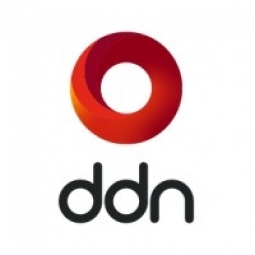公司规模
Large Corporate
地区
- America
国家
- United States
产品
- DDN GRIDScaler®
- GS12K™ scale-out appliance
- IBM® GPFS™ parallel file system
技术栈
- High Performance Computing (HPC)
- Next-Generation Sequencing
- Data Analytics
实施规模
- Enterprise-wide Deployment
影响指标
- Productivity Improvements
- Innovation Output
技术
- 基础设施即服务 (IaaS) - 云存储服务
- 分析与建模 - 大数据分析
适用行业
- 医疗保健和医院
- 生命科学
- 教育
适用功能
- 产品研发
- 质量保证
用例
- 预测性维护
服务
- 云规划/设计/实施服务
- 数据科学服务
- 系统集成
关于客户
迈阿密大学拥有全美最大的集中式学术网络基础设施之一,这对于应对重大科学挑战和解决当今许多最具挑战性的问题至关重要。在其计算科学中心 (CCS),来自多个学科的 2,000 多名研究人员、教职员工和学生合作开展需要高性能计算 (HPC) 资源的多种跨学科项目。该中心提供硬件、软件开发和分析专业知识,以支持各种研究领域,包括基因组学、计算生物学、海洋生态系统、海洋建模、气候和气象学、计算经济学、计算流体动力学以及社会系统信息学。迈阿密大学计算科学中心主任兼医学、计算机科学和健康信息学教授 Nicholas Tsinoremas 博士表示,该中心建立的前提是数据推动发现。因此,跟上数据增长的步伐至关重要。
挑战
迈阿密大学计算科学中心 (CCS) 是美国最大的集中式学术网络基础设施之一。它为多个学科的 2,000 多名研究人员、教职员工和学生提供支持,帮助他们完成需要高性能计算 (HPC) 资源的多元化和跨学科项目。该中心的指导原则是尽可能无缝地管理整个数据生命周期,以简化研究工作流程。然而,该中心面临着一些挑战。多元化的跨学科研究项目需要大量的计算和存储能力以及集成的数据生命周期移动和管理。下一代测序的爆炸式增长对计算和存储需求产生了重大影响,因为现在可以生成更多更大的数据集,这通常会造成处理瓶颈。在几天内从一个基因组中创建 40 亿个读取所需的繁重 I/O 只有在需要管理和分析读取数据时才会加剧。该中心需要一个强大的文件系统,该系统足够灵活,可以处理非常大的并行作业以及较小、较短的串行作业。
解决方案
该中心选择了端到端、高性能 DDN GRIDScaler® 解决方案,该解决方案采用 GS12K™ 横向扩展设备和嵌入式 IBM® GPFS™ 并行文件系统。CCS 的理想存储解决方案将为高通量基因组学和高度交互的研究协作提供单一平台。该中心需要适应其整个数据生命周期,因此用户不必直接处理大量数据移动。DDN Storage 优于竞争存储平台,因为它能够利用一个强大、易于管理的平台来确保高性能、简化协作和加速数据分析。DDN 的 GS12K 横向扩展文件存储设备具有 1PB 的存储空间,最适合满足大学不断增长的 IOPS 和带宽需求,同时确保极快的应用程序性能。此外,嵌入式 GPFS™ 并行文件系统消除了购买和管理外部服务器、网络适配器和交换机的需要。
运营影响
数量效益

Case Study missing?
Start adding your own!
Register with your work email and create a new case study profile for your business.
相关案例.

Case Study
Hospital Inventory Management
The hospital supply chain team is responsible for ensuring that the right medical supplies are readily available to clinicians when and where needed, and to do so in the most efficient manner possible. However, many of the systems and processes in use at the cancer center for supply chain management were not best suited to support these goals. Barcoding technology, a commonly used method for inventory management of medical supplies, is labor intensive, time consuming, does not provide real-time visibility into inventory levels and can be prone to error. Consequently, the lack of accurate and real-time visibility into inventory levels across multiple supply rooms in multiple hospital facilities creates additional inefficiency in the system causing over-ordering, hoarding, and wasted supplies. Other sources of waste and cost were also identified as candidates for improvement. Existing systems and processes did not provide adequate security for high-cost inventory within the hospital, which was another driver of cost. A lack of visibility into expiration dates for supplies resulted in supplies being wasted due to past expiry dates. Storage of supplies was also a key consideration given the location of the cancer center’s facilities in a dense urban setting, where space is always at a premium. In order to address the challenges outlined above, the hospital sought a solution that would provide real-time inventory information with high levels of accuracy, reduce the level of manual effort required and enable data driven decision making to ensure that the right supplies were readily available to clinicians in the right location at the right time.

Case Study
Gas Pipeline Monitoring System for Hospitals
This system integrator focuses on providing centralized gas pipeline monitoring systems for hospitals. The service they provide makes it possible for hospitals to reduce both maintenance and labor costs. Since hospitals may not have an existing network suitable for this type of system, GPRS communication provides an easy and ready-to-use solution for remote, distributed monitoring systems System Requirements - GPRS communication - Seamless connection with SCADA software - Simple, front-end control capability - Expandable I/O channels - Combine AI, DI, and DO channels

Case Study
Driving Digital Transformations for Vitro Diagnostic Medical Devices
Diagnostic devices play a vital role in helping to improve healthcare delivery. In fact, an estimated 60 percent of the world’s medical decisions are made with support from in vitrodiagnostics (IVD) solutions, such as those provided by Roche Diagnostics, an industry leader. As the demand for medical diagnostic services grows rapidly in hospitals and clinics across China, so does the market for IVD solutions. In addition, the typically high cost of these diagnostic devices means that comprehensive post-sales services are needed. Wanteed to improve three portions of thr IVD:1. Remotely monitor and manage IVD devices as fixed assets.2. Optimizing device availability with predictive maintenance.3. Recommending the best IVD solution for a customer’s needs.

Case Study
HaemoCloud Global Blood Management System
1) Deliver a connected digital product system to protect and increase the differentiated value of Haemonetics blood and plasma solutions. 2) Improve patient outcomes by increasing the efficiency of blood supply flows. 3) Navigate and satisfy a complex web of global regulatory compliance requirements. 4) Reduce costly and labor-intensive maintenance procedures.

Case Study
Cloud-based healthcare solution for Royal Philips
Royal Philips wanted to launch its cloud-based healthcare solution HealthSuite Digital Platform in China to deliver services to help cope with challenges related to urbanization and population growth. Philips wanted to achieve this goal by combining mobile, cloud computing and big data technologies. To bring this platform and product to market, Philips required cloud computing and local technical service capabilities in China, in addition to a flexible IT infrastructure that could handle user requests.








